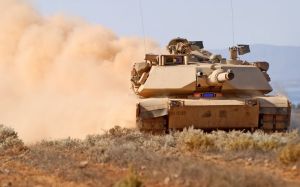
The tank of the battle of M1 Abrams is combat the principal tank of the army of the United States and the marine bodies of the United States, with three principal versions being to start deployed in 1980: M1, the M1A1, and the M1A2. The last versions of the M1A2 have new armor and package of electronics. It is baptized name of the General Creighton Abrams, former chief of the army of personnel and ordering armored regiment of the army thirty-seventh. M1 Abrams replaced M60 Patton in …
The tank of the battle of M1 Abrams is combat the principal tank of the army of the United States and the marine bodies of the United States, with three principal versions being to start deployed in 1980: M1, the M1A1, and the M1A2. The last versions of the M1A2 have new armor and package of electronics. It is baptized name of the General Creighton Abrams, former chief of the army of personnel and ordering armored regiment of the army thirty-seventh. M1 Abrams replaced M60 Patton in the service of the USA, as well as the M48A5. It, however, was useful beside the M60A3, which had written the service right two years before (1978) M1, during more than one decade.
The first attempt to replace the series of M60 aging of tanks was the abortive MBT-70, developed with Germany. M60 Patton was itself a progressive evolution of a design starting with the era of the Second World War M26 Pershing, with a very large profile, and the rather average armor and the weapon compared with the contemporary Soviet designs. The MBT-70 was very ambitious, as much of American programs of weapons of the Sixties. It had a system of a missile launched by gun, the suspension of kneeling, a driver placed in the turret, and various the other ideas which finally proved not succeeded. The cancellation of this project prepared the ground for the tank much more successful of M1 Abrams, which did not incorporate the majority of the tedious innovations tested by the MBT-70.
M1 Abrams was designed in the Chrysler Defense (in 1979, Division bought by Division of the defense of Chrysler of ground systems of General Dynamics) and is currently produced by a company of General Dynamics in Lima, in Ohio, and the first written service of an army of the USA in 1980. A version improved of M1, the M1A1, was presented in 1985. The M1A1 has M256 gun of smoothbore of 120 millimeters developed by Rheinmetall AG of Germany for leopard 2, the improved armor, and a protection system of CBRN.






You must be logged in to post a comment.